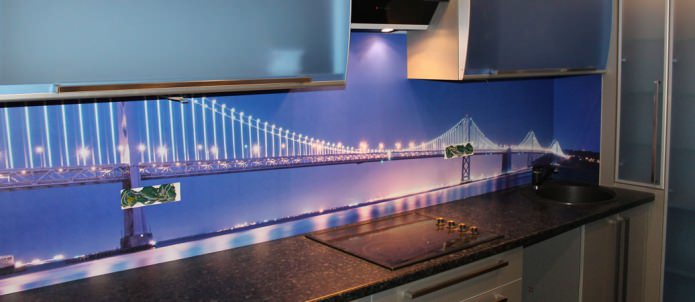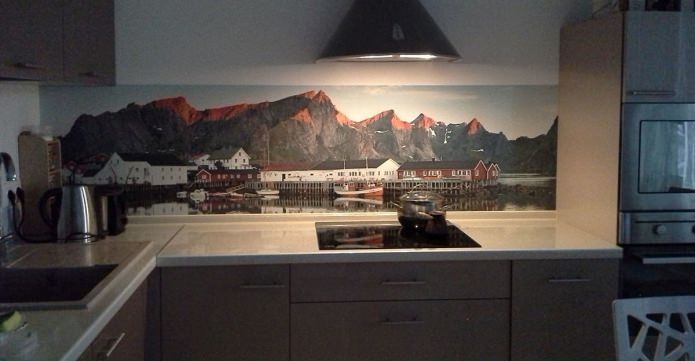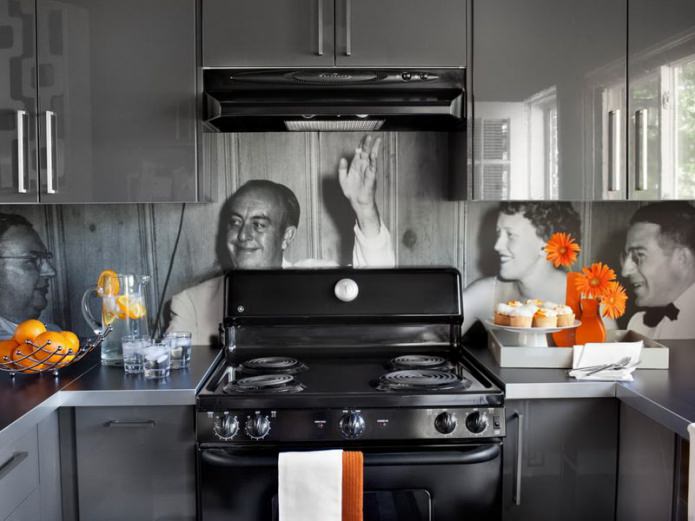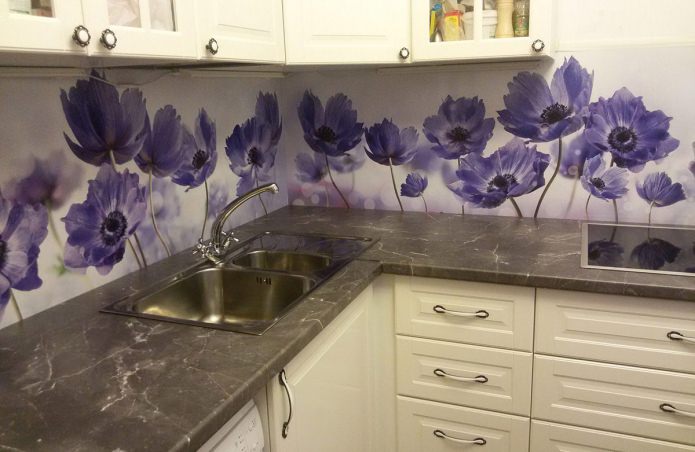Plastic kitchen apron: types, design options, photos
Tell
Plastic aprons for the kitchen are gaining more and more popularity. The reason for this is the value for money. For example, a plastic kitchen apron with photo printing will cost several times cheaper than a similar tempered glass apron (). The ease of installation also plays a role, because you can install such an apron yourself, avoiding additional costs.
Plastic, or plastic, is a synthetic material made from polymers. Polymers are obtained synthetically, and at the same time they set the desired properties, obtaining plastics for various purposes. Plastic kitchen aprons are mainly made from several types of plastics, which differ both in properties and in price.
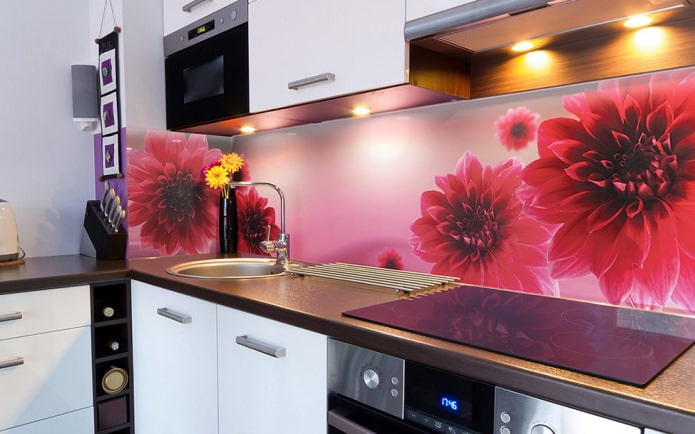
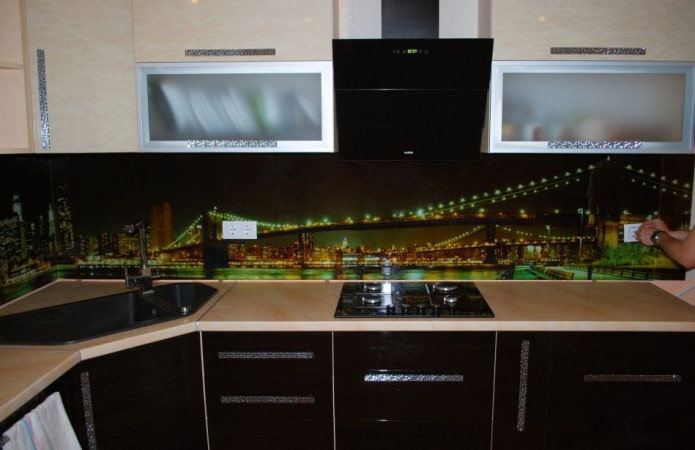
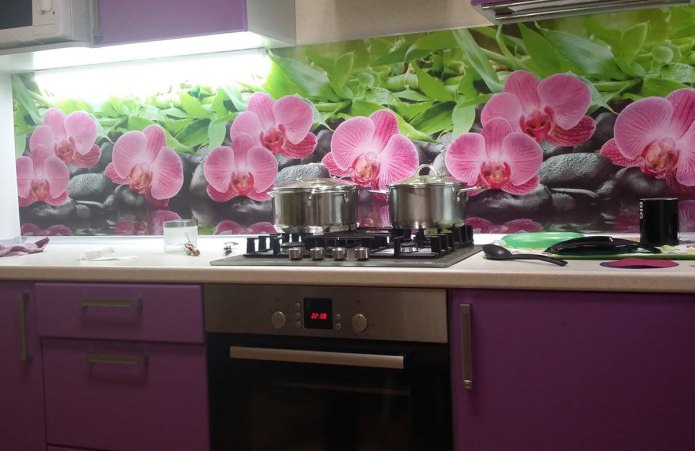
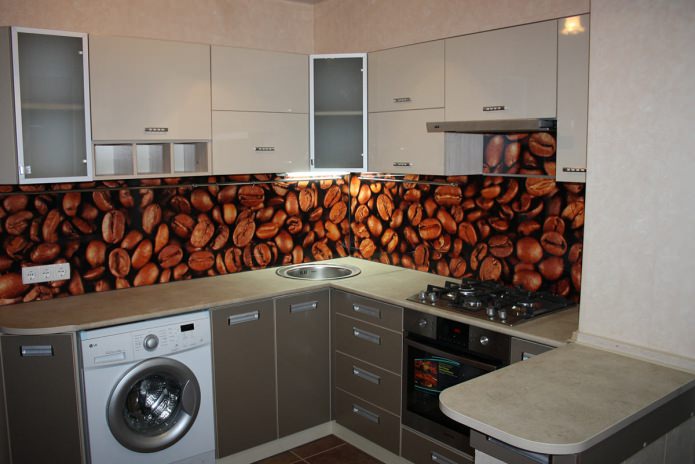
Types of plastic for aprons in the kitchen
ABS
ABS plastic is produced in the form of granules, transparent or having a color. They are molded into flat sheets of size 3000x600x1.5 mm or 2000x600x1.5 mm. It is a very impact and bending resistant material. If the temperature rises to 100 degrees for a short time, it will not catch fire, and 80 degrees can withstand a long time, so ABS kitchen aprons are fireproof. A metallic coating can be applied to this plastic - then it will look like a mirror, but the weight and installation of products from it is much easier than from mirror glass.
The main advantages of the material:
- Resistant to aggressive liquids and environments;
- Does not deteriorate when interacting with fats, oils, hydrocarbons;
- It can have both a matte and a shiny surface;
- A wide variety of colors;
- Not toxic;
- It can be operated at temperatures from -40 to +90.
Cons of a kitchen apron made of ABS plastic:
- Fast fading in sunlight;
- When acetone or solvents containing it get on the surface, the plastic dissolves and loses its appearance;
- The material has a yellow tint.
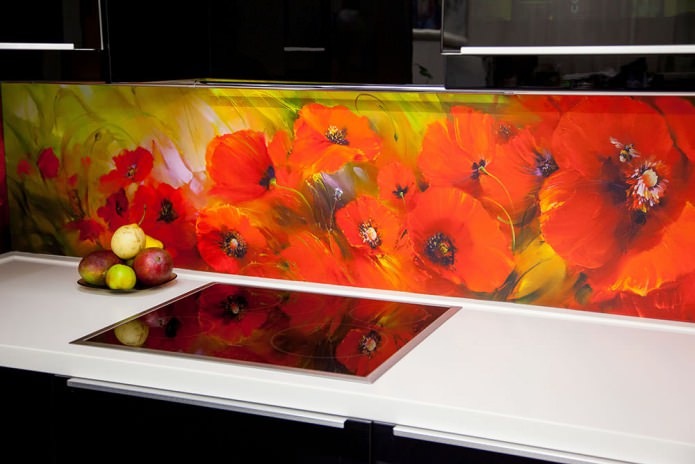
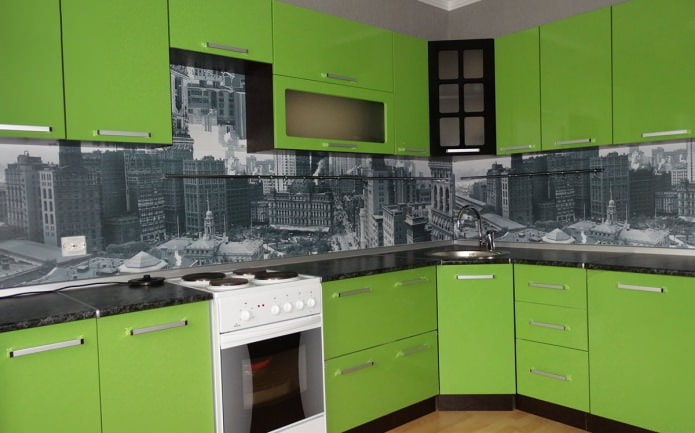
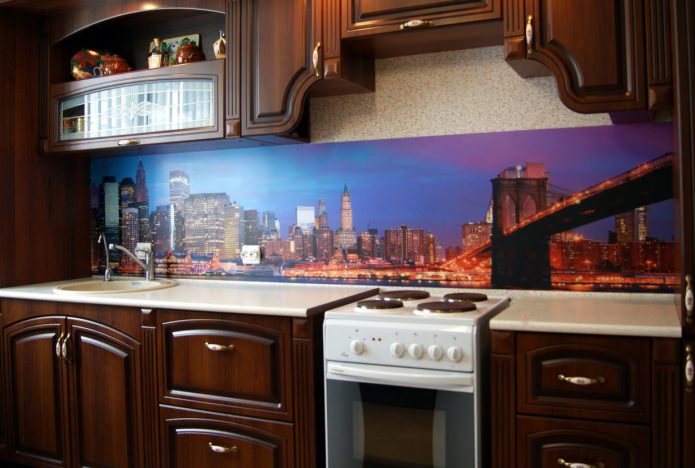
Acrylic glass (polycarbonate)
It is produced in the form of sheets with dimensions of 3000x600x1.5 mm and 2000x600x1.5 mm. In many respects, this material is superior to glass - it is more transparent, withstands even strong impacts, while it has a small specific gravity, it is easier to mount it on the wall in the kitchen than glass.
Advantages of a polycarbonate kitchen apron:
- High transparency;
- Impact and bending strength;
- fire resistance;
- Does not fade or fade in the sun;
- Fire safety: does not burn, but melts and solidifies in the form of threads, does not form toxic substances during combustion;
- Does not release hazardous substances into the air even when heated;
- It has an attractive appearance, practically indistinguishable from glass.
The only problem- a rather high price of the product compared to other types of plastic aprons, but still it is much cheaper for the kitchen, although it surpasses it in some respects.
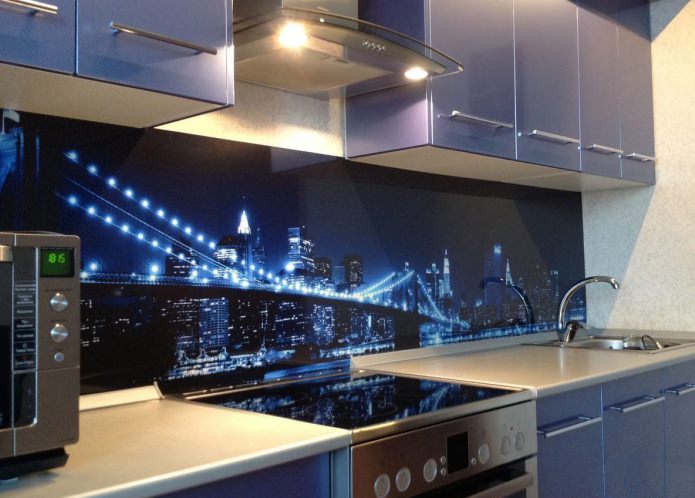
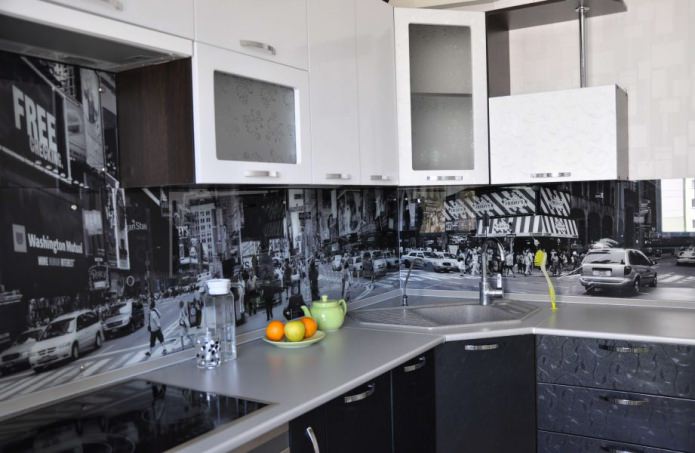
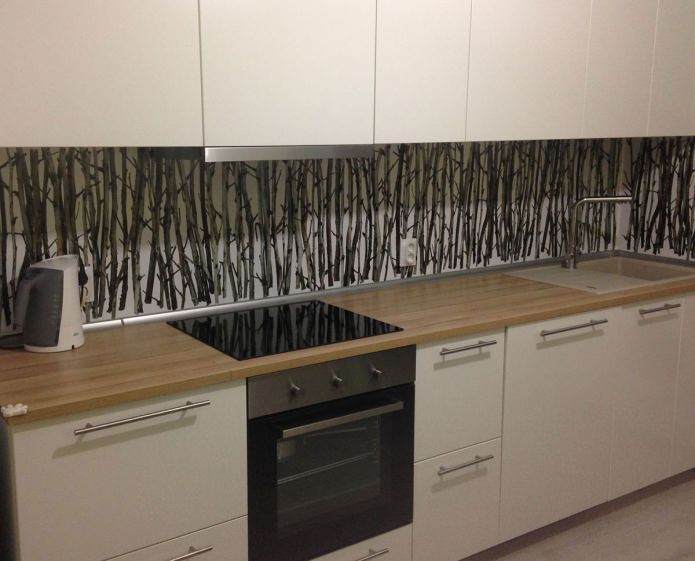
PVC
Polyvinyl chloride has long been widely used in finishing work, and not only in the kitchen. Most often, kitchen panels for aprons made of plastic are made from it. This is a fairly budget option, which has its pros and cons.
Finishing material is produced in several types:
- Panels: up to 3000 x (150 - 500) mm;
- Lining: up to 3000 x (100 - 125) mm;
- Sheets: (800 - 2030) x (1500 - 4050) x (1 - 30) mm.
PVC is the most budget option, and also the most “high-speed” - installation does not require preliminary surface preparation, it can be done on its own.
Advantages of using PVC for the production of plastic apron:
- Ease of installation and maintenance;
- Resistance to high temperatures and humidity;
- A variety of design solutions: plastic can have any color, voluminous details, prints or be transparent.
Cons of a PVC kitchen apron:
- Low abrasion resistance;
- Rapid loss of strength;
- Rapid loss of appearance under the influence of light and detergents;
- Water can get into the gaps between the panels, as a result, suitable conditions are formed for the formation of fungus and mold;
- Low fire safety: does not withstand contact with fire;
- May release hazardous substances into the air.
Not all panels have the last drawback, so when buying, you should require a quality certificate and make sure that the chosen option is safe.
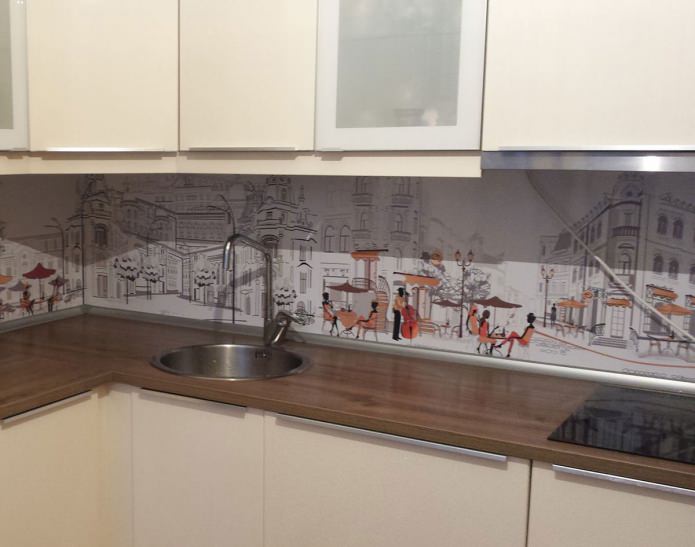

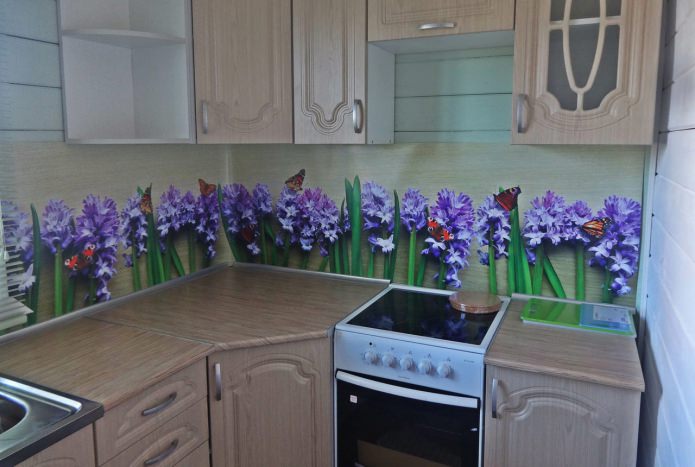
Plastic provides the widest possibilities for design, since products made from it can have almost any color, interesting texture, embossed surface, pattern or photograph applied using photo printing. The only problem is to choose the right option for your interior.
Color
Plastic can have any color and shade - from pastel, light colors to thick, saturated colors. Colors are selected, focusing on the chosen style of interior and the size of the kitchen. Light colors will help to make the kitchen visually larger, dark ones “compress” the room.
The kitchen apron area is the most “dirty” place in the kitchen, so a pure white or black color is hardly appropriate here. On soothing pastel colors, water drops and other dirt are not so noticeable, the panels do not have to be wiped several times a day.

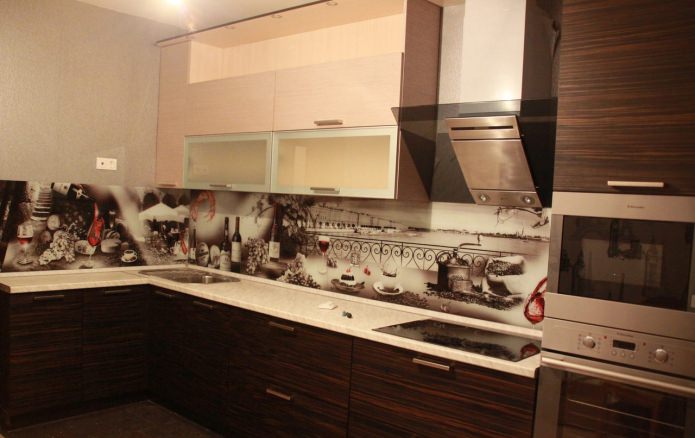
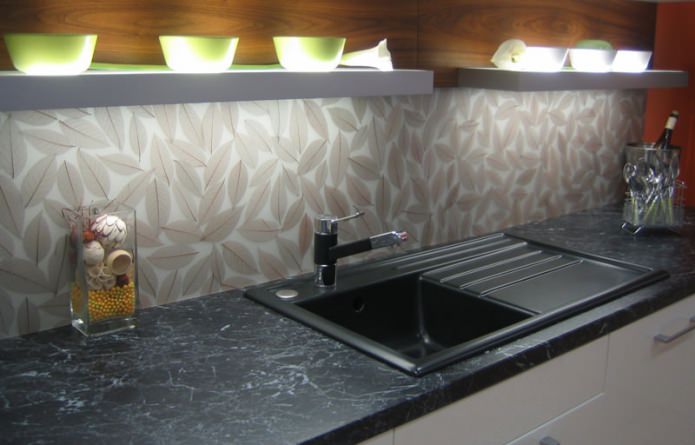
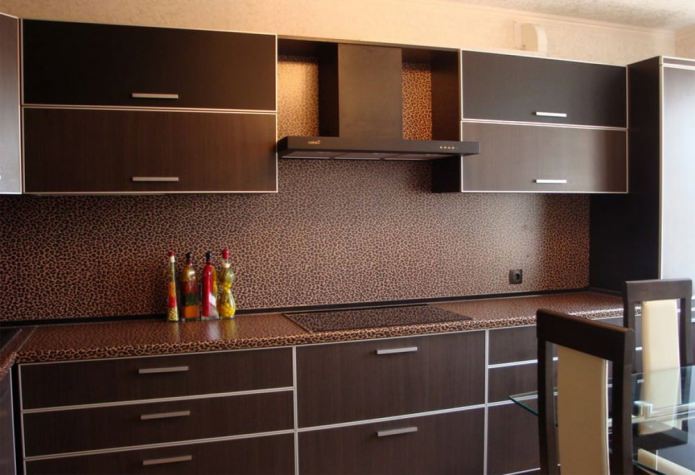
Drawing
Almost any pattern can be applied to plastic - its choice depends only on your imagination and design requirements. Small patterns will help make accidental dirt less noticeable, they are suitable for small kitchens. In a large room, you can use large patterns and drawings.

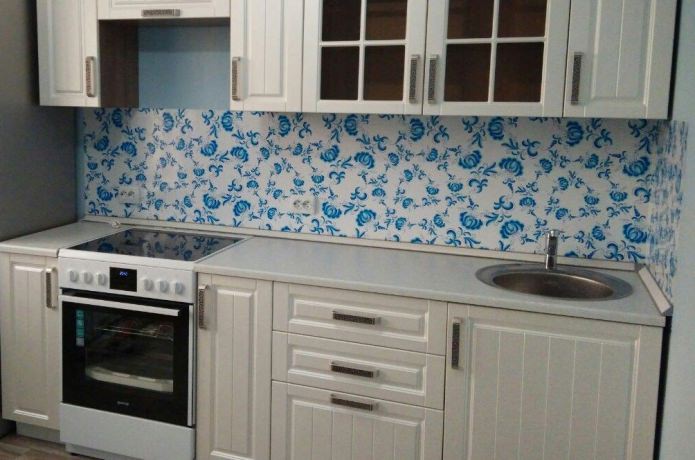

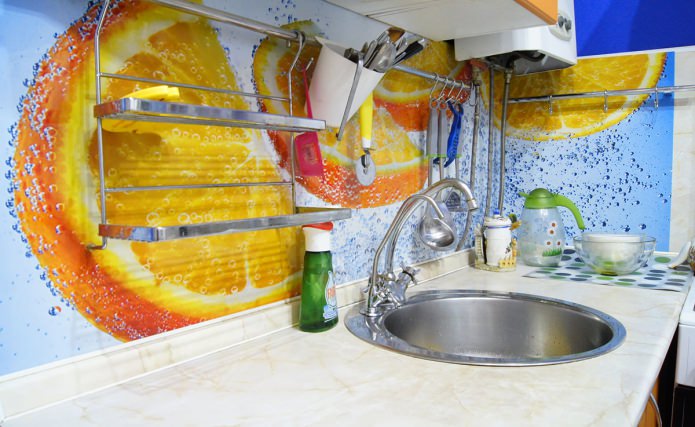
Imitation of natural materials
Plastic panels imitating natural finishing materials are very popular. They save not only money, but also time during repairs. Laying brickwork or porcelain stoneware tiles is expensive and time-consuming, installation of a “brick-like” or “porcelain-like” panel can be done on your own and takes only a few hours.
Plastic can imitate ceramic tiles with or without a pattern, the popular boar tile in different colors, wood or stone surfaces. Imitation of materials is applied to plastic using photo printing.
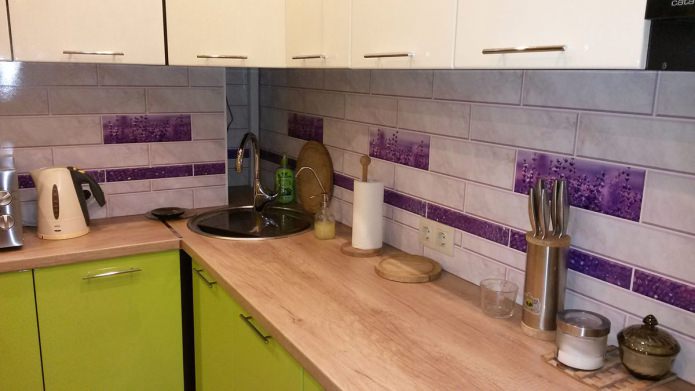

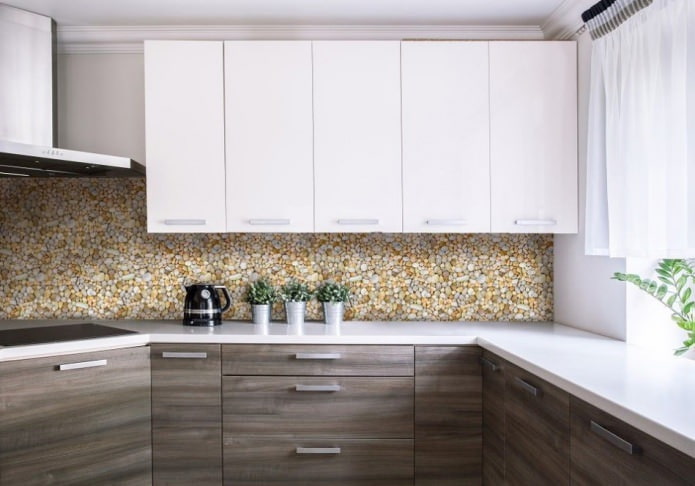
Photographic images of various subjects on kitchen aprons are gaining popularity. They make it possible to make the kitchen more interesting, give it exclusivity, photographs remind of favorite places, summer vacations, transfer to a garden with exotic flowers or add delicious fruits to the kitchen decor.
Kitchen aprons made of plastic with photo printing cost much less than those made of glass. The cost of installation is also lower, and, in addition, it remains possible to change something in the kitchen. In a glass apron, after its installation, it is no longer possible to make a hole to hang, for example, a railing that is necessary, or a shelf for spices. Plastic allows it. Moreover, at a glance, the glass skinal is practically indistinguishable from a kitchen apron made of plastic with photo printing.
![]()
